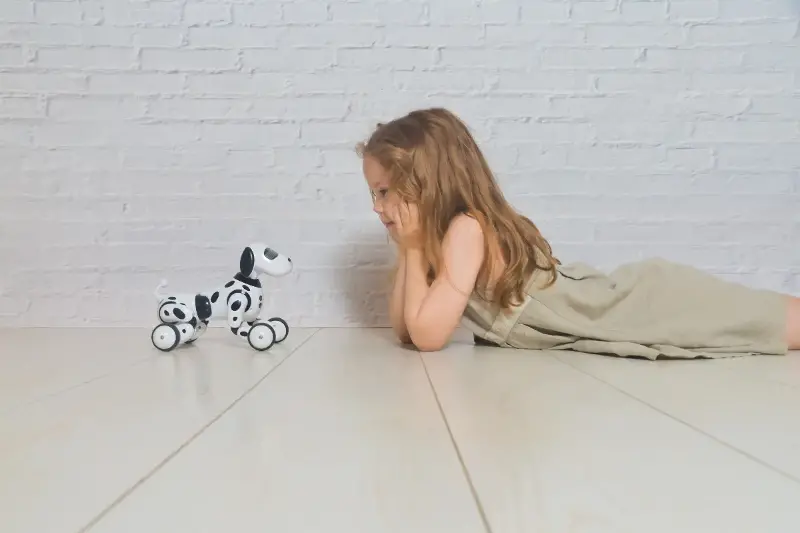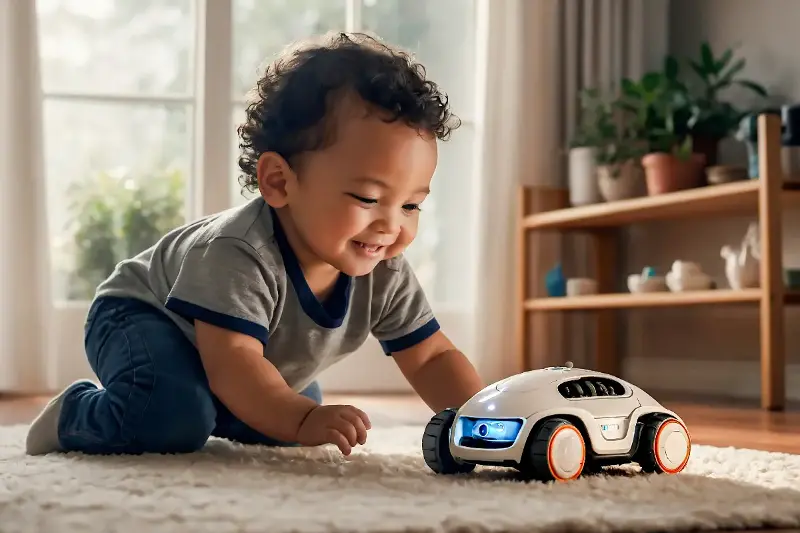Step into any modern home and you’ll notice a dramatic shift in the way children play. Gone are the days when teddy bears merely waited for bedtime cuddles; today, they might just ask you how your day was—or even respond with a joke. Smart toys powered by Artificial Intelligence (AI) are poised to revolutionise children’s playtime, offering both a leap in entertainment value and a potential reset of how kids learn, interact, and grow.

From Static Playmates to Talking Companions
Imagine a plush puppy that not only barks on command, but learns to recognise your child’s voice, adapts its responses, and remembers their favourite stories. That’s no longer science fiction. AI-driven toys like Cognitoys’ dinosaur engage in two-way conversations, providing personalised responses and even sparking curiosity on topics from space to simple arithmetic.
What sets these toys apart isn’t just their novelty—it’s their ability to bond with children, creating a dynamic feedback loop of interaction and learning.
Some of the key features in today’s smart toys include:
- Voice recognition for personalised play
- Cloud connectivity for constant updates and evolving responses
- Storytelling modes that adapt based on the child’s mood or behaviour
- Language translation and multicultural learning tools
Unlocking Learning Potential Through Technology
It’s no secret that kids learn best when they’re engaged. AI-powered smart toys are designed to hold attention longer than traditional toys, offering educational games and challenges without the usual coaxing from parents. For example, LeapFrog’s LeapBuilders system combines bricks and smart sensors, so creative construction also means interactive discovery—numbers, colours, and even music.
Key educational advantages of AI-enhanced toys:
- Adaptive Learning: Toys identify learning gaps and adjust content, ensuring children aren’t left behind or bored.
- Real-Time Feedback: Smart robots such as ROYBI or Miko 3 answer questions instantly, encouraging curiosity and promoting independent learning.
- Social Skills: Interactive play improves emotional intelligence as children practice empathy, conversation, and collaboration—even when playing solo.
When learning feels like play, children are more likely to persist, explore, and absorb new concepts.

Imagination Unleashed—But Safe?
With great power comes great responsibility. As AI toys become almost lifelike, questions about safety, privacy, and screen time loom large for parents. Most leading smart toy companies now prioritise:
- Strict data encryption to protect user privacy
- Parental controls to filter content and restrict features
- Offline modes to ensure healthy, balanced play
Innovators are working to foster both imagination and safety. For instance, many AI toys only record and store data locally, eliminating fears that conversations could be shared or hacked. Parents also receive detailed reports on playtime habits, giving unprecedented insight into their child’s development—a digital window into the imagination at work.
The Playroom of Tomorrow: What’s Coming Next?
The smartest toys today are just the beginning. Industry analysts predict that coming generations will bring:
- Customisable avatars that mirror children’s personalities and interests
- Augmented reality enhancements that blend physical and digital worlds seamlessly
- Greater integration with formal education, turning homework into interactive quests
Toymakers are already collaborating with psychologists and educators to ensure AI enriches—not replaces—traditional play. Physical activity, creativity, and social interaction remain essential, and the best new smart toys are those that blend digital magic with real-world fun.
Imagine a world where children’s toys are both captivating and constructive, nurturing skills for a future we can barely imagine.
Ultimately, as AI continues to shape the landscape of playtime, the trend raises as many questions as it answers. Will these intelligent toys inspire the next generation of inventors and thinkers—or will they create new dependencies on technology? The answer may depend not just on the toys themselves, but on how thoughtfully we guide their use.
As you watch the next generation embrace ever-smarter playthings, perhaps ask yourself: what kind of world will these toys help build—and how will today’s playtime shape tomorrow’s possibilities?
